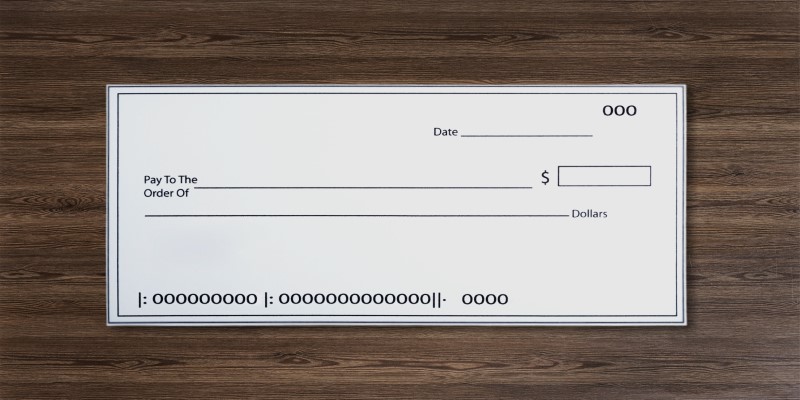What to Know About E-Filing Your Tax Return: Safety, Benefits, and Considerations
Jan 04, 2025 By Rick Novak
In today's digital age, many of us have embraced the convenience of handling our finances online, from banking to shopping. One area where this shift is particularly evident is tax filing. The ease and effectiveness of electronically filing your tax return, or "e-filing," has made it more and more popular.
However, with this convenience comes concerns about security and safety. Is it really safe to e-file your tax return? Let's delve into the details to understand the risks, benefits, and safety measures associated with e-filing.
Benefits of E-Filing Your Tax Return
E-filing offers several advantages over traditional paper filing. First and foremost, it's convenient. Instead of filling out lengthy paper forms and mailing them to the IRS or your local tax authority, you can file your taxes from the comfort of your home or office with just a few clicks. This convenience saves time and reduces the likelihood of errors, as e-filing software often includes built-in checks to ensure accuracy.
Another significant benefit is speed. When you e-file, your tax return is processed much faster than if you were to mail a paper return. This means you can receive any refund due to you more quickly, typically within a few weeks, compared to several weeks or even months with paper filing.
Moreover, e-filing is environmentally friendly. By reducing the amount of paper used for tax returns, you can contribute to conservation efforts and reduce your carbon footprint. Many individuals and businesses appreciate the sustainability aspect of e-filing.

Risks and Concerns
Despite its advantages, e-filing does come with some risks that taxpayers should be aware of. One primary concern is security. When you e-file, you are transmitting sensitive personal and financial information over the internet. This information includes your Social Security number, income details, and potentially bank account information if you're expecting a refund via direct deposit.
To mitigate these risks, it's crucial to use reputable e-filing software or platforms. Look for services that employ strong encryption methods to protect your data during transmission and storage. Additionally, ensure that the software provider adheres to industry standards and regulations for data security. Reading reviews and checking for certifications can help you gauge the reliability of a particular e-filing service.
Phishing scams are another risk associated with e-filing. Cybercriminals may attempt to trick taxpayers into disclosing their personal information through fraudulent emails or websites that mimic legitimate tax filing services. Always use official websites to access e-filing services; never click on dubious links or download attachments from unidentified sources in order to avoid being a victim of phishing scams.
Safety Measures When E-Filing
To enhance the safety of your e-filing experience, consider implementing the following measures:
Use Strong Passwords
Ensure your e-filing account has a strong, unique password that includes a mix of letters, numbers, and special characters. Avoid using easily guessable passwords like "123456" or "password."
Enable Two-Factor Authentication

Many e-filing platforms offer two-factor authentication (2FA) as an additional layer of security. This requires you to verify your identity through a second method, such as a text message code or authentication app when logging in.
Update Your Software Regularly
Keep your operating system, antivirus software, and e-filing application up to date with the latest security patches and updates. This helps protect against vulnerabilities that cybercriminals could exploit.
Monitor Your Accounts
Regularly review your bank and credit card statements, as well as your tax account, if applicable, for any unauthorized transactions or activities. Early detection can help minimize the impact of identity theft or fraud.
Secure Your Devices
Ensure that any device used for e-filing, such as your computer or smartphone, is protected with antivirus software and a firewall. Avoid using public Wi-Fi networks when accessing sensitive financial information.
Use Secure Networks
When e-filing, always use a secure and private internet connection. Avoid public Wi-Fi networks, such as those in cafes or airports, which can be more susceptible to hacking attempts. If you must use public Wi-Fi, consider using a virtual private network (VPN) to encrypt your internet connection and add an extra layer of security.
Be Wary of Phishing Attempts
Phishing remains a common tactic used by cybercriminals to steal personal information. Be cautious of unsolicited emails, messages, or phone calls claiming to be from the IRS or your tax software provider.
The IRS does not initiate contact with taxpayers via email, text messages, or social media channels to request personal or financial information. Always verify the legitimacy of communication by contacting the organization directly through official channels.
Backup Your Data
Before submitting your tax return electronically, consider making a backup of your completed tax documents and storing them securely. This ensures you have a copy in case of technical issues or data loss during transmission.
Use Encrypted Storage
If you store any tax-related documents or sensitive information on your devices, ensure they are encrypted. To further secure data from unwanted access, encryption jumbles it into a format that can only be read or decoded with the right decryption key.
Conclusion
E-filing your tax return can be a safe and efficient way to fulfill your tax obligations, provided you take the necessary precautions to protect your personal and financial information. The advantages of electronic filing, including its speed, convenience, and environmental friendliness, have led many taxpayers to choose it. But it's crucial to keep an eye out for such threats like phishing scams and data breaches.
By using reputable e-filing software, employing strong security measures, and staying informed about current threats, you can minimize the risks associated with e-filing and enjoy a smooth tax filing experience. Remember, your safety online begins with proactive steps to safeguard your information. Happy filing!

Understanding Dual Agency in Real Estate Transactions

Mortgage Down Payment Assistance Programs: Pros and Cons Explained

Understanding Average Monthly Household Expenses

Treasury Notes Explained: The Secret Behind Your Mortgage Rate

Understanding the Ins and Outs of Check Endorsements: A Handy Guide

Should You Use Your Realtor’s Preferred Lender?

Wedding Budget Breakdown: Tips for Creating a Budget

What Is Unrealized Gain? Definition, Uses, and More

A Guide to Self-Funding Higher Education - Paying For College

